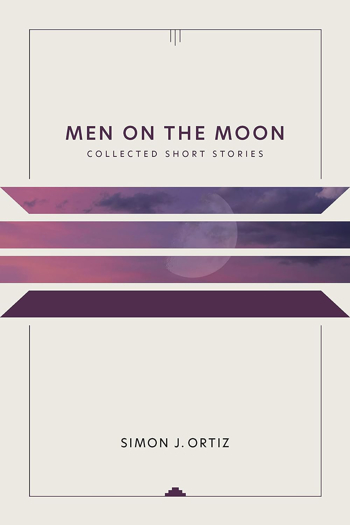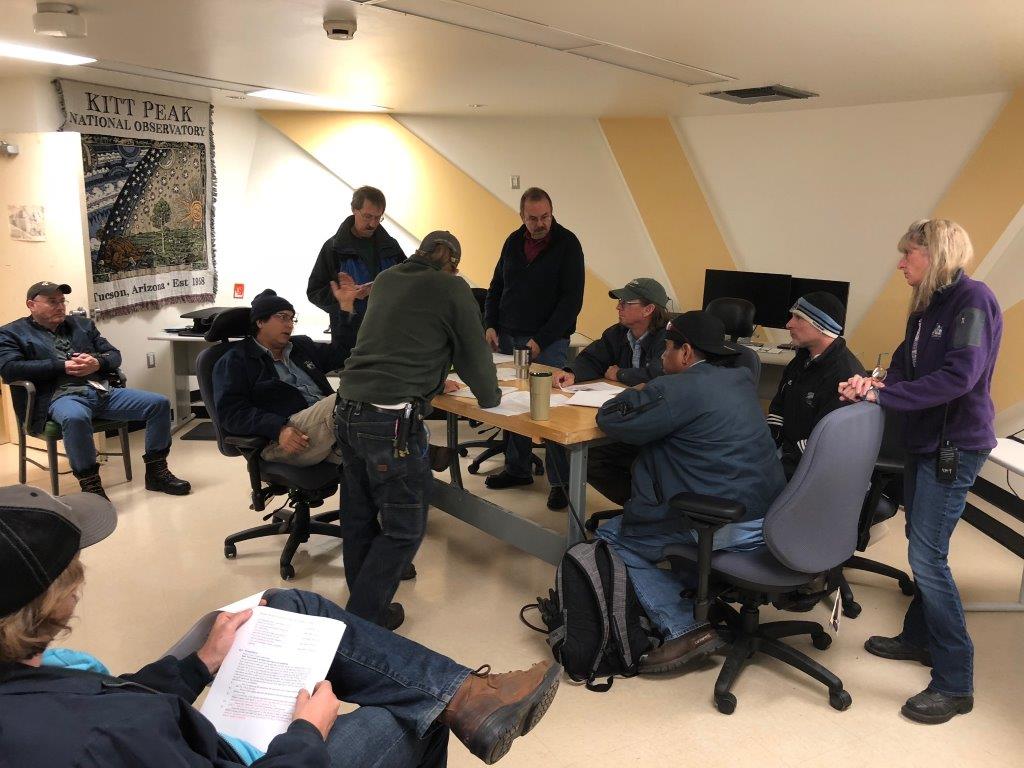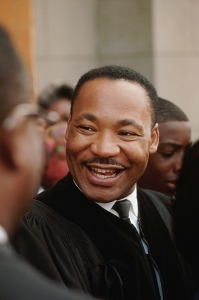I am fascinated by history and I love reading about discoveries made by archeologists who study artifacts humans left behind in the distant past. This is basically what led me to read E. Charles Adams’ The Origin and Development of the Pueblo Katsina Cult, which I discussed about a week and a half ago. However, I think it’s important to remember that pueblo culture is alive in the modern world. While I think it’s fascinating to read the story of changes that occurred in that culture some 500 years ago, I think it’s also fascinating to read what that culture is like today. In order to learn a little about modern pueblo culture, I turned to a writer who was born at Acoma Pueblo in New Mexico, Simon J. Ortiz, and his short story collection Men on the Moon.
I picked this collection for a couple of reasons. Most importantly is that I met Ortiz several years ago when I worked with a local book festival in Las Cruces, New Mexico. At the time, I’d mostly been familiar with Ortiz’s poems, so I was interested in seeing some of his longer tales. Second, I have visited Acoma Pueblo and know the area as it is today. That said, while Ortiz brings his background as an Acoma native to these stories, only a few are actually set at Acoma and the stories aren’t focused exclusively on the “Acoma experience,” whatever that might be. Still, one thing Ortiz says in his preface to the book really resonated with me. “As human beings, we, as personal and social cultural entities, are conscious beings because of story, no other reason.” He talks about how stories have power and how that power is essential to our life. The stories in this collection are personal stories. They are stories of experiences Ortiz has had. They reflect his life and experience and they remind me that he is part of a living culture.
Although I’m curious about the subject after reading Adams’ book, little in this book provided a modern perspective on the katsina. In one story, a character is compared to the virile warrior Kahtzina, Payatyamo. In another story, Ortiz introduces us to a character named Kaiser. The elders tell him legends about the Kahtzina, Spider Old Woman. Later in the story, it’s mentioned that Kaiser always wore his special suit to the Kahtzina dances. Note, the word Kachina or Katsina is not standardized across the pueblos. As I understand, Kahtzina is the Acoma spelling. In a first-person story, Ortiz writes about meeting a man who says, “You see, I teach history, and sometimes I get the feeling my people think I’m giving away secrets. You know Hopi secrets.” The scene reminds us that in the living pueblo culture, many aspects of spiritual life are not for public display. They’re very much a personal thing.
A couple of years ago, my wife and I visited the Museum of Northern Arizona in Flagstaff. While there, we saw a wonderful exhibit about the project that created a Navajo-language dub of the movie Star Wars. The exhibit discussed how much Star Wars resonated with Navajo culture. In particular, the exhibit highlighted Navajo stories of the Warrior Twins and how many Navajo people saw that echoed in the story of Luke and Leia. As I read, Men on the Moon, I also came to really understand Native Americans as a culture subject to an imperial, authoritarian government. Some of this is expressed in the draconian ways laws are enforced on Native lands. Some of this is the way in which Native people are drafted into the military. Some of this is in the way young people were taken from their homes and forced into “Indian Schools” where they had to learn English and American culture. It’s never easy to be confronted with these viewpoints, but confronting this viewpoints is important if we’re to understand a living culture.
Perhaps my favorite moment in this collection occurs in the title story. Young people give their grandfather his first television and he watches one of the early moon landings. The young people tell the grandfather that they’ve gone to the moon to collect rocks and that they believed there’s no life on the moon. “Yet those men were trying to find knowledge on the moon. Faustin wondered if perhaps they had special tools with which they could find knowledge even if they believed there was no life on the moon.” In effect, the grandfather, Faustin, knows that knowledge comes from stories. However, stories come from life. If there is no life on the moon, there cannot be knowledge. It’s a moment that reminds us how important living culture really is.
Men on the Moon is available at: https://www.amazon.com/Men-Moon-Collected-Stories-Tracks-ebook/dp/B0B8T9YC18/
My research into the novella Breaking the Code involved reading and listening to numerous Navajo stories as well as stories from people who lived in Gallup, New Mexico near the beginning of World War II. You can find out more about my novella at: https://www.amazon.com/Breaking-Code-Systema-Paradoxa-Book-ebook/dp/B08RW4CMR8/



